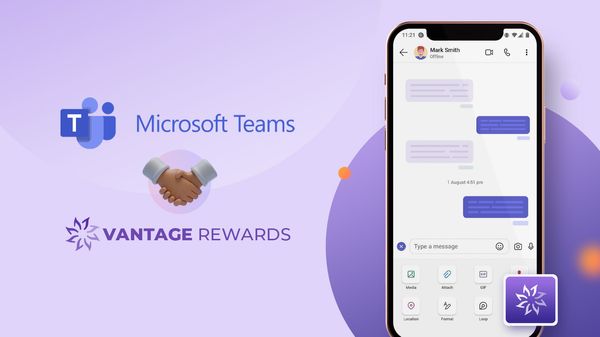Everything About Niche Marketing With Examples
Most small or medium business owners have one common complaint. Your industry is supersaturated, and you are finding it hard to implement a good marketing plan. Whether you know about niche marketing or not, it is difficult to stand out from the chaos without a good niche marketing strategy. Here in this blog, we will look at niche marketing with examples, but we will also learn a few techniques.
What is Niche Marketing?
Niche marketing is the exact opposite of the phrase "Jack of all trades, master of none." Niche Marketing is all about targeting a defined segment of the population with a specific product. Instead of focusing on a mass market, niche marketers focus only on one product or one target market.
A niche market is a specific segment of a general market. It specializes by focusing on one identity, needs, or preference.
Niche marketing has been with us for some time. What is new is the increased diversity in the market and advanced technologies enabling new marketing practices.
Due to intense competition, usually, a shakeout takes place in the market. We are leaving behind only the strongest amongst the competition.
It makes sense for not only small businesses but also medium-sized businesses to cash in niche markets. Anyway, it makes sense, right? Loyal customer base? Check. Insignificant to no competition? Check.
Niche Marketing And Mass Marketing
Most managers are taught to concentrate on mass marketing which delivers the most desirable output.
But in today's competitive market, there is a debate between mass marketing and niche marketing. Mass marketing focuses on standardization, and niche marketing focuses on customized or tailored products for a segmented market. It doesn't seem very easy to choose one side.
You can argue that mass marketing is more beneficial, but the existing and rapidly changing mini markets demand profitable niche marketing.
In the product-oriented era of marketing, the so-called mass marketing campaign was pursued by many companies.
Let's take the example of coca-cola. It had one bottle and one flavor. The original coke. In that era, targeting a niche market was not expected. People marketed goods and services with a mindset that the market was one and not segmented. The basic idea was to focus on the people's everyday needs rather than focusing on the difference.
But with today's technology and mindset of the people, small markets tend to be more beneficial for small and large businesses.
Don't get me wrong. Mass marketing is still prevalent today. Products like sugar, salt, milk, etc., are still being marketed as "undifferentiated" products. But even these products are becoming more segmented.
We can also decentralize a large company to serve different market segments. Companies have various strategic units that cater to their target audience. It is because markets are being "demassified."
In the Third Wave, Tofler talks about how a declassified society was transforming the corporate industry. He states how markets and information and production are being broken into smaller and smaller markets.
Companies like IBM and Coca-Cola have changed their marketing stance from a single market to multitudes of smaller markets. It is seen that even when a product is intended for a mass market, the niche campaign is generally more successful.
Diet coke contributes to only 4% of Coca-Cola's total sales volume. It is considered a niche product for a segmented audience since it targets a specific group.
Health freaks.
But diet coke contributes more net profit than the classic coke. It is not just limited to Coca-Cola. General commodity producers like milk companies have also ventured into the "healthier" or a smaller market to realize more profits.
Choosing a Niche Strategy
We know, choosing a niche strategy can be difficult. Here we are going to go through some well-established strategies and also look at niche marketing with examples.
According to Leflaang, we should consider these points before going into niche marketing -
-
Realizing the advantage of your product or service in the specific market segment.
-
The long-term interest of the potential customer on the product or service.
-
Identifying if an emotional connection is possible or not( niche marketing banks heavily on the loyalty of the target market).
-
Market share of the most prominentIdentifying your company's strengths and weaknesses goes a long way. It is the most crucial part of a niche marketing campaign. Playing to your strengths. You should be able to identify which target audience you will be catering to. player.
The Guidelines of Marketing Campaign
Identify Yourself
Identifying your company’s strengths and weaknesses goes a long way. This is the most important part of a niche marketing campaign. Playing to your strengths. You should be able to identify which target audience you will be catering to.
Identify Your Target Audience
To sell products or services to potential customers, you need to extract the correct information from your target markets. The difference between mass marketing is that you need to know your audience when targeting a niche market.
Actions for understanding your target market:
-
Know the business and demographics of your potential customers.
-
Understand the product or service your defined segment is using.
-
Use digital marketing to understand your market’s internet activity and identify high intent keyword.
Understand Your Competitor
Find out how your competitor is having the big chunk of the market share. You must understand their products and marketing campaigns before you take any significant steps. We are not telling you to channel your marketing efforts similarly to your competitor. Still, it helps to understand how your competitor got to their current state.
Do not compete with yourself.
We have seen many big players compete with themselves when they enter a segmented market. The segmentation of a big market is fine, but multiple segmentation in the same area is not.
Let's take an example of P&G. Tide is one of their most celebrated products. It is one of the most successful detergents of all time, with a brand value of $9.1 billion.
Then comes its sister brand, Ariel. Although an initial success, Ariel ended up taking a hit. Successive quarters of losses ended Ariel’s run in multiple countries. Where Tide is sold in 142 countries, Ariel's presence is graced on only 22 countries.
Soaking losses is easier for Goliath corporations than the Davids of the industry.
Don’t Spread the Butter Too Thin.
If you entered a niche industry, then it is likely that you are going to discover a few more. Many failed niche industries spread their wings too far into different market segments. While this is fine for companies with an endless money pit, a small industry suffers when its resources are not appropriately managed.
Set The Bar High
Just like Walter White built a close relationship with his associates, build a lasting and close relationship with your target audience. It makes sure that any new company looking to enter your market should climb a high barrier. Do all the groundwork and make sure you cover all the bases to deter competition.
Additionally, conducting regular market research and generating a detailed marketing report can provide valuable insights into consumer behavior, competitor analysis, and campaign performance, helping businesses make informed decisions and optimize their niche marketing strategies.
Niche Marketing With Examples
Since all the hard work's been done, time for some fun. We promised you some fun, and we don't back out from our promises. Let’s tackle the interesting topic of niche marketing with examples.
1. Lefty’s
When 90% of the world is right-handed,a left-handed store might not seem like a good idea. But that did not deter Lefty's from entering the industry.
Lefty's is a San Francisco-based retail outlet for, no prizes for guessing, left-handed people. They entered into the e-commerce domain, but they also used digital marketing to increase their presence on the internet.
They used Google's PPC to rank for terms that left-handed people are more likely to search for. Many small businesses think that they cannot compete with big companies when it comes to PPC advertising. But Lefty's proved everyone wrong. They proved that PPC advertising and digital marketing could be beneficial for even small businesses.
2. Bajaao
Ask any Indian musicians about their favorite musical instrument retailer. Bajaao will most probably their answer.
In the era of Flipkart and Myntra, Bajaao(founded before both these sites) grew slowly but steadily and dominated the niche market.
Ashutosh Pande founded Bajaao when he was 26 years is now India's largest and oldest e-commerce retailer of musical instruments. Bajaao has over 12,000 products listed and ships over 15,000 products every month.
Bajaao, when founded in 2005, targeted tier 2 cities in India as their desired segment of the population for their target market. They realized that in tier 1 or metro cities, products were readily available. It was a gamble at that time to target tier 2 Indian cities. But Bajaao's game was spot on. Their highest sales came from cities in Mizoram and Kanpur.
Bajaao's yearly revenue is about $32 million.
3. HealthKart
Ask any fitness enthusiast what their top priority is. The answer will be proper nutrition. But in the Indian subcontinent, the availability of nutritional products is limited and faked to a high degree. HealthKart stepped in when the time was right and targeted a desperate, niche, and local market.
HealthKart is an e-commerce site that specializes in nutritional products from mass gainers to whey protein and everything in between.
Prasant Tandon and Sameer Maheswari founded HealthKart in 2010. The timing couldn't have been more right for HealthKart. Booming e-commerce and the absence of big players were a recipe for success. HealthKart aimed to target a specific segment of the Indian market segment. Young fitness enthusiasts.
HealthKart focused on digital marketing as their go-to marketing campaign. They target keywords related to health and wellness, investing in PPC search ads and display ads.
Healthkart taps into a $22 billion market and is now valued at about $27 million.
4. Early Salary
It all started with a high. Life couldn't be any better. Everything was falling into place, and nothing could ruin. But as the days went by, things became grim, and by the end of the month, it was rock bottom.
No, it's not an excerpt from a best-selling novel but the monthly struggle of salaried people at the end of the month!
Early salary started with the motto "Your month end's best buddy!". Targeting a niche market of salaried millennials, EarlySalary struck a gold mine here.
EarlySalary is an innovative lending platform that offers customers the convenience of availing small loans at minimum hassle and on short notice.
The service was available as a mobile app whose target audience was salaried professionals who often struggled during the month-end till their salary gets credited.
EarlySalary was founded in 2016 and already has 1,000,000+ downloads in Play Store.
For their marketing strategy, they targeted their niche audience on appropriate platforms. In platforms like Facebook or Instagram, the CPC's advertisements were too high because of their diverse audience group.
EarlySalary focused its marketing campaigns on employee engagement platforms like Vantage Circle.
Top-of-the-line employee engagement platforms like Vantage Circle has 400+ corporate partners and has 1,000,000+ salaried professionals using their platform. It was a no-brainer that any company whose niche audience was corporate employees, Vantage Circle was their answer.
EarlySalary is now worth over $20 million.
Finally
Niche marketing requires an organization that is customer-focused, competition oriented and responsive. It should function in balance with the market and should be in pursuit of long-lasting relationships with the customers.
There are ample examples of niche marketers who have succeeded and failed. Lots of avenues to learn from. But where do we begin?

















